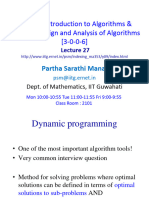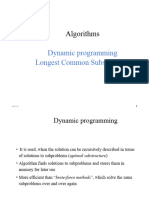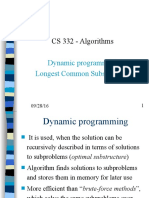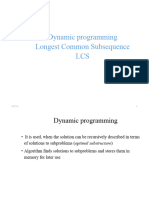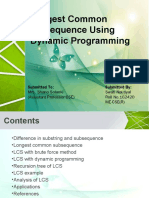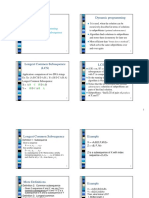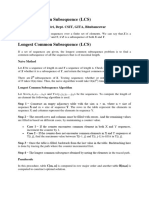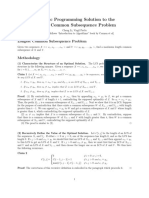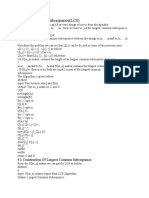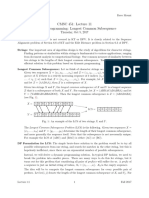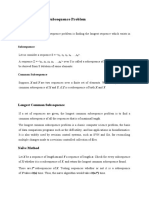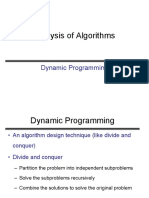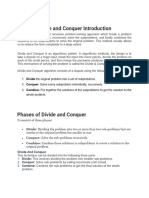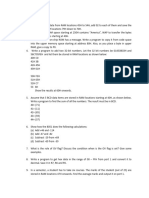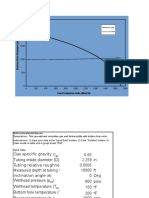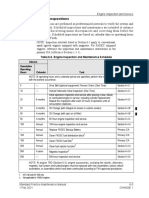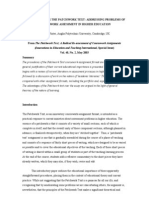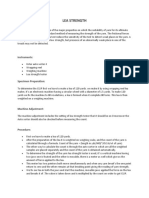0% found this document useful (0 votes)
46 views67 pagesLCS Using DP
The document discusses the longest common subsequence problem and provides an example to demonstrate the recursive algorithm. It defines the problem as finding the longest subsequence that is common to two sequences, describes an optimal substructure and provides a recursive solution using a 2D table to store subproblem solutions.
Uploaded by
BushraSCopyright
© © All Rights Reserved
We take content rights seriously. If you suspect this is your content, claim it here.
Available Formats
Download as PDF, TXT or read online on Scribd
0% found this document useful (0 votes)
46 views67 pagesLCS Using DP
The document discusses the longest common subsequence problem and provides an example to demonstrate the recursive algorithm. It defines the problem as finding the longest subsequence that is common to two sequences, describes an optimal substructure and provides a recursive solution using a 2D table to store subproblem solutions.
Uploaded by
BushraSCopyright
© © All Rights Reserved
We take content rights seriously. If you suspect this is your content, claim it here.
Available Formats
Download as PDF, TXT or read online on Scribd
/ 67

